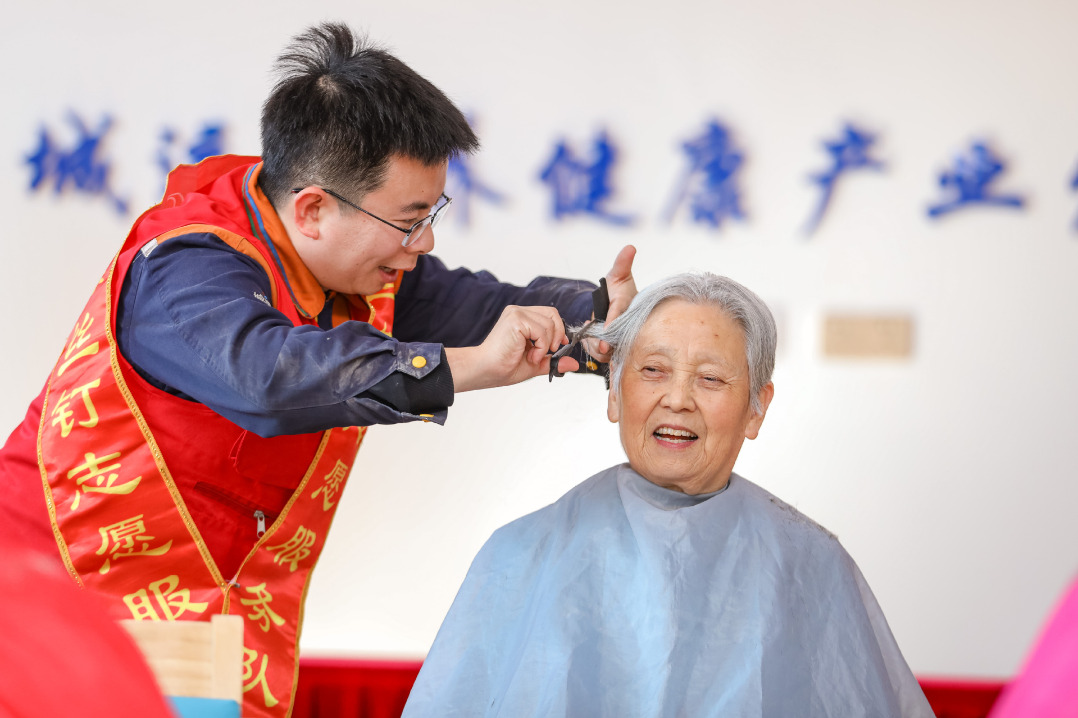Cooperation promotes sustainable fishing in Yellow Sea


On a summer morning this year in the Huang-Bohai New Area of Yantai, Shandong province, volunteers transferred lively fish seedlings into water buckets. Nearby, team members carefully poured these buckets into an inflatable waterway, releasing the young fish. The seawater carried them toward the open sea, marking the sixth China-South Korea joint release of fishery resources for stock enhancement.
During the event, over three million seedlings of various species, including swimming crabs, greenfin horse-faced filefish, Korean rockfish, and blackhead seabream, were released into the Yellow Sea, an important fishing ground for fishermen from both China and South Korea.
Since the joint fish stocking event was launched in 2018, more than 11.46 million aquatic seedlings have been released into the waters to restore fish populations and improve the marine ecosystem, according to the Ministry of Agriculture and Rural Affairs.
Shan Xiujuan, an expert from the Chinese Academy of Fishery Sciences under the ministry, said the fish stocking activities have significantly contributed to restoring economic fish populations in recent years. "They've helped protect the marine environment and improved the livelihoods of fishermen in both countries," said Shan, a researcher from the academy's Yellow Sea Fisheries Research Institute.
In recent years, the gazami crab, one of the most widely fished economic crab species, has become a concern for both China and South Korea as it is vital for both nations' cuisines and marine biodiversity. Both countries actively monitor the released crabs.
In 2022, Chinese marine biologists collected 29 parent crabs for release, and a survey found that eight of the 559 adult crabs recaptured were offspring of the released parents, according to the ministry.
Starting in 2024, marine experts from the two countries began exchanging data on the gazami crab and agreed to develop a joint molecular marker detection system by 2026. "The system incorporates microsatellite (also known as Simple Sequence Repeat, or SSR for short) and single-nucleotide polymorphism, or SNP, markers, aiming to enhance tracking and evaluation of the released crabs," Shan said.
The resources of the Yellow Sea are crucial for the sustainable development of the fishing industry and the well-being of fishermen in both countries. In 2000, the two nations signed a mutual fisheries agreement. The long-term and stable implementation of the agreement over the past two decades demonstrates the goodwill and joint efforts of both China and South Korea to pursue common development, the ministry said.
The two sides have cooperated in areas such as fishery resources conservation, maintenance of order in marine operations, and protection of fishermen's rights, greatly contributing to sustainable fishery development in the region.
Over the years, China and South Korea have established various dialogue mechanisms, including a joint committee on fishery and high-level talks, regularly discussing fishery issues to foster mutual understanding and cooperation.
In April, the Asia-Pacific Economic Cooperation's Oceans and Fisheries Working Group hosted a workshop in Busan, South Korea, focusing on best practices for preventing and combating illegal fishing. As APEC members, China and South Korea have been working to strengthen vessel management and combat illegal fishing activities through joint patrols in designated areas, the ministry said.
China is eager to continue its partnership with South Korea, further deepening cooperation and expanding the scope of joint efforts to ensure the healthy development of the fishery industry, it added.
zhaoyimeng@chinadaily.com.cn





































